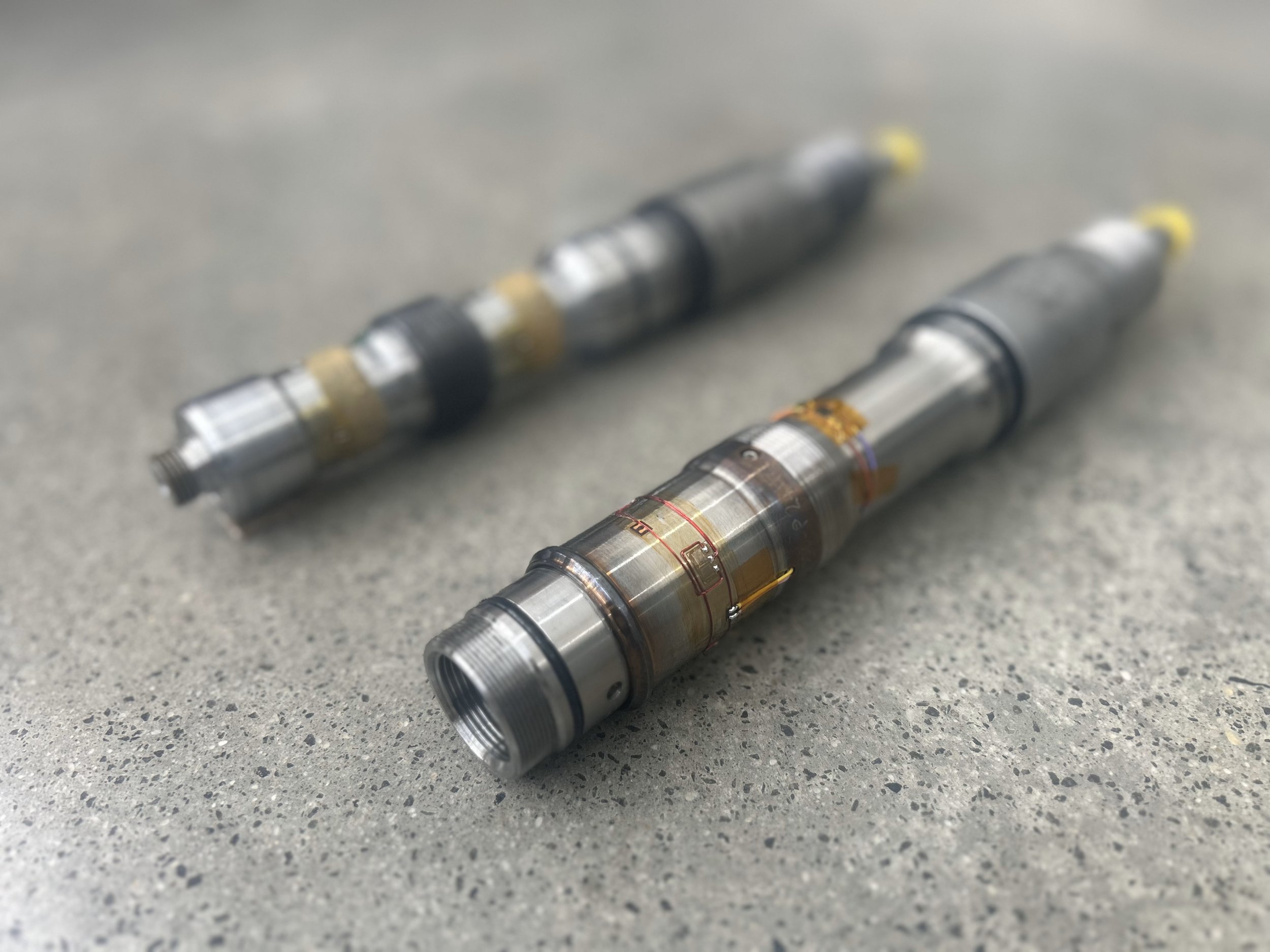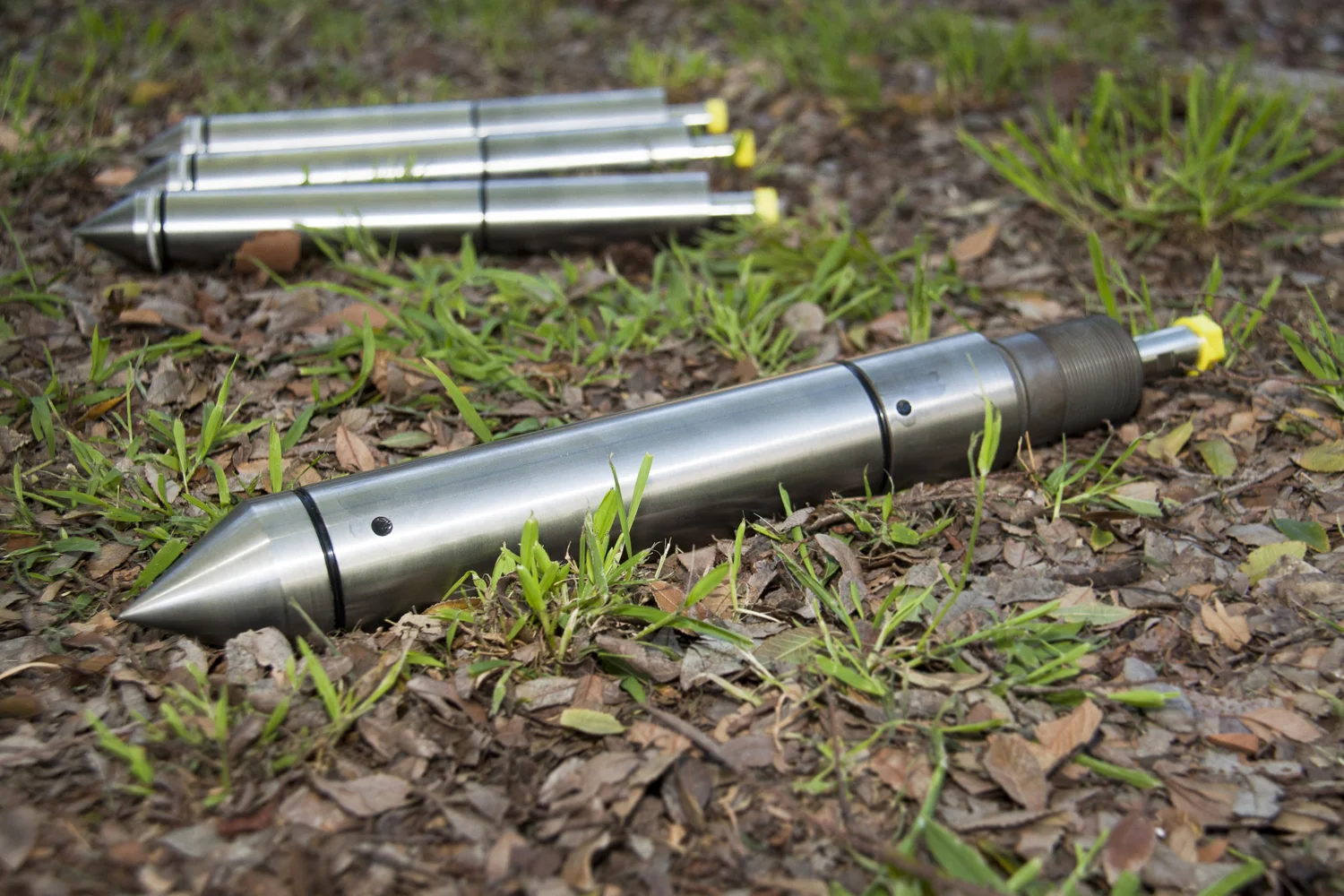A Cone Penetration Test (CPT) involves using hydraulic rams to push 36 mm diameter rods into the soil from a ballasted truck, anchored drill rig or anchored portable rams. Attached to the end of the rods is a cone containing sensors that measure qc (cone resistance), fs (sleeve friction), u2 (pore water pressure) and inclination. The cone is connected to a data acquisition system during the test with the data logged every 10 mm and viewed live by the operator and engineer.
The collected data allows reliable interpretation of soil strength and stiffness parameters, and the soil type.
The live inclination measurement allows the operator to determine if the cone is being bent in the soil, and therefore reduces risk of damage. Clients are not responsible for any costs associated with damage to cones.
The results are presented in plots and provided in a raw format (.txt). The following procedures are applied to the data:
The qc is corrected for pore water pressure effects to provide qt.
The friction ratio, Rf (= fs/qt x 100%) helps identify soil type.
A 15 cm cone (larger and stronger) can be used where adverse soil conditions (gravels, cobbles) are expected.
Soil samples can be rapidly collected with the use of Vertek or MOSTAP soil piston samplers.
Testing depths of 40 m or more are achievable depending on soil conditions.
A CPT conducted to a depth of 25 m will take about 2 hours. This is much quicker, and therefore cheaper, than drilling, which may take a day or more and would not provide the same level of detailed useful subsurface information.
Cone Types
10 cm2 100 kN compression piezocone
This is the standard cone used on most projects.
It provides qc (tip resistance) to 100 MPa, fs (sleeve friction) to 2 MPa, u2 (pore pressure) to 5 MPa, and inclination to 20°.
These were made especially for the Australian market as the sleeve friction limit is higher than standard, due to the prevalence of hard clay in the region.
15 cm² compression and subtraction piezocones
The larger size means these are much stronger cones.
The 15cm² compression cone is very similar to the 10cm² compression cone except larger. The subtraction cone has the sleeve friction and tip resistance measured together on the same piece of steel. This means the shaft diameter at the strain gauges is larger than the compression cone and is therefore stronger.
Sleeve friction is calculated by subtracting the tip resistance from the total resistance, hence the name. This results in theoretically less accuracy, but real world results show very good comparisons to compression cone data.
10 cm² 10 kN or 25kN high-sensitivity compression piezocones
Identical to the 100 kN compression cones, except with a much thinner measuring body, limiting it to 10 kN or 25kN, but providing 10x or 4x the resolution.
For testing in soft soils.
The 25kN compression cone is the standard cone used on all tailings dams.
Comparisons between these cones and the 100 kN cones show that even in soils with very low cone tip resistance (200 kPa), the results compare very well.
100 cm² T-Bar compression cone
Similar to the high-sensitivity cone in that it provides qc to 10 times the resolution of a standard 10 cm² cone.
The cone body is the same, but a T-shaped tip is installed which has a projected area of 100 cm².
Can only be used in very soft soils.
Allows measurement of residual strengths, by recording cone tip resistance when retracting the cone from the base of the test hole.






